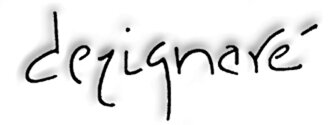|
Who are interior designers?
· Interior designers are design professionals, qualified by experience, education and examination to provide interior design services. 16,400 interior designers have met these qualifications and have earned an NCIDQ certificate. A definition of interior design is available from the NCIDQ office.
· Interior designers are not decorators. NCIDQ does not qualify decorators and jurisdictions do not regulate decorators.
· It is impossible to identify the exact number of people who refer to themselves as interior designers since not all U.S. jurisdictions regulate interior design. However, only those 16,400 individuals who are NCIDQ certificate holders can be identified as having met all requirements to competently practice interior design.
· Currently, there are 23 US jurisdictions with interior design regulations.
Are there significant differences between the qualification for licensing architects and for licensing/registering/certifying interior designers?
· Yes. Interior designers are not architects-just as architects are not engineers. Education, experience and examination standards for interior designers cannot be compared to those of architects, since interior designers do not study or practice architecture.
· A rigorous system for accreditation of interior design education programs, monitoring of interior design experience and interior design examination has been developed over the past 25+ years, utilizing appropriate industry standards.
· Similar organizations exist in interior design and architecture.
Do interior designers want to raise the standards for licensure so their standards are comparable to architects?
· The standards for the interior design profession cannot be compared to the standards for the architectural profession, since interior designers do not practice architecture. The standards for interior design licensure/certification, as regulated by 21 U.S. jurisdictions and 8 Canadian provinces are determined by those respective jurisdictions. NCIDQ supports the requirement of education, experience and examination as the minimum standard for the practice of interior design.
Isn't interior design a distinct profession, requiring separate and distinct education and training?
· Yes, NCIDQ has conducted several job/task analyses of the interior design profession - the only organization to conduct an analysis of the interior design profession separate and apart from other professions.
· Interior designers are the only design professionals who are educated, experienced and examined solely in the area of interior design.
The National Council for Interior Design Qualification (NCIDQ), as a part of its ongoing effort to ensure the relevance, validity and psychometric (test statistics) quality of the examination conducted the Analysis of the Design Profession in 1998. Based on the findings of the study, NCIDQ revised the examination program with the goal of providing the most up-to-date and appropriate examination possible. Currently the NCIDQ exam consists of six sections: three multiple choice sections and three practicum (design) sections. The new exam will be composed of three sections: two multiple choice sections and one practicum section.
The examination includes the following:
Section 1: Principles and Practices of Interior Design
Will address the domains of project organization, programming, schematics and design development. (Multiple Choice - 150 questions)
Section II: Contact Development and Administration
Will address the domains of contract documents and contract administration (Multiple Choice - 125 questions)
Many questions on both Section I and II incorporate drawings, pictures, symbols, and textual formats typical in the interior design profession, requiring candidates to recall, apply, and analyze information.
Section III: Schematics and Design Development
Will require candidates to produce a design solution. Candidates will receive a program based on a multi-functional facility. All candidates for a given test date will receive the same problem. All design solutions must address the principles of accessible design. (Practicum)
Using the Analysis of the Interior Design Profession, NCIDQ has determined that six performance domains characterize the work of interior design:
(I) Project Organization
(II) Programming
(III) Schematics
(IV) Design Development
(V) Contract Documents
(VI) Contract Administration
The weighting structure of the new examination is derived from each domain's relative importance, criticality, and frequency. The performance domains provide the logical and analytical basis for each part of the revised NCIDQ examination program. "Since the NCIDQ examination reflects the practice of interior design, NCIDQ continually performs a practice analysis to update the examination. These updates are reflective of the ever changing profession of interior design. However, it is very important to note that the NCIDQ will only test 100% health, safety and welfare issues," says, Kenneth A. Baker, Deputy Director.
For the over 25 years, NCIDQ administered the exam through a network of volunteer exam proctors who have contributed to the success of the program. To adhere to the most current professional testing standards, NCIDQ realized the need to contract these services to a professional testing company. CAS, a professional testing company, is responsible for all aspects of the exam administration, including processing exam registration, securing appropriate exam sites, issuing letters of admission, training exam proctors, and the shipping and receipt of all exam materials. NCIDQ, working with psychometric leadership from CAS, is responsible for the development of the examination by utilizing interior design practitioners and educators to develop the exam content.
NCIDQ Fee Schedule
All fees are effective January 1 of the year stated. All dollar amounts are US unless noted otherwise (CA = Canadian).
|
